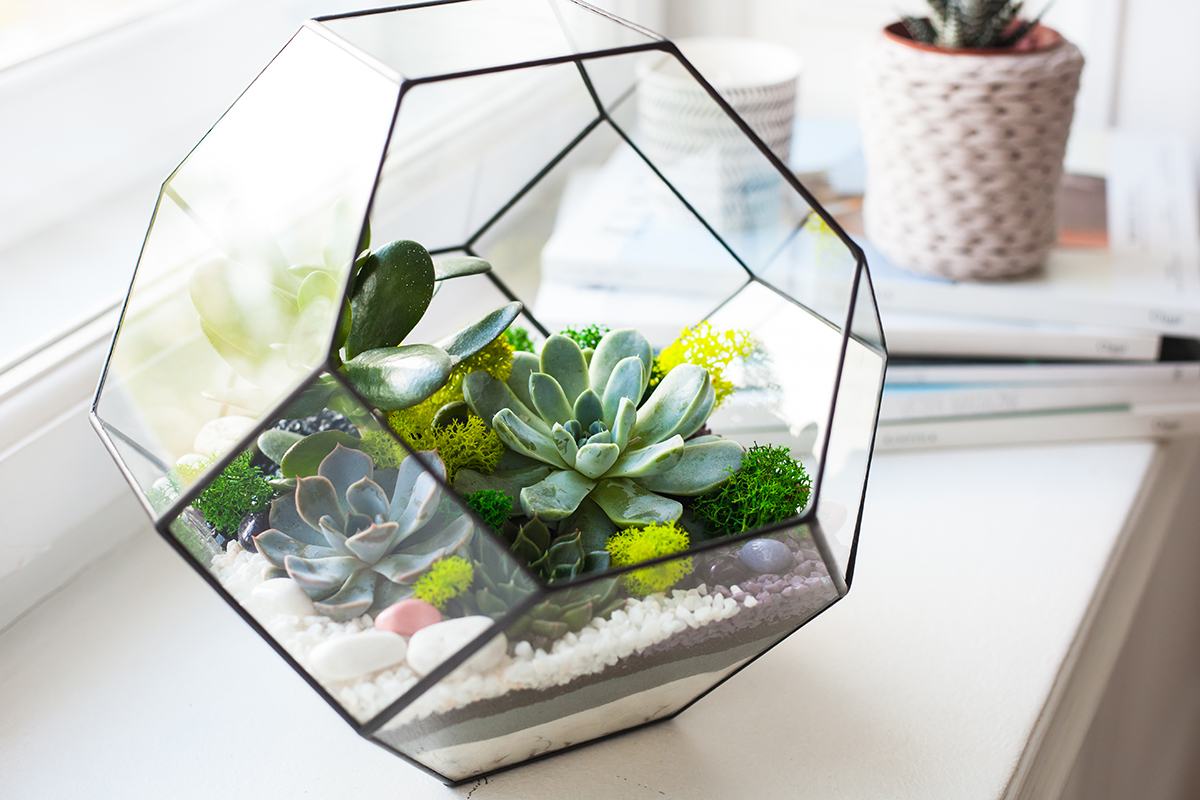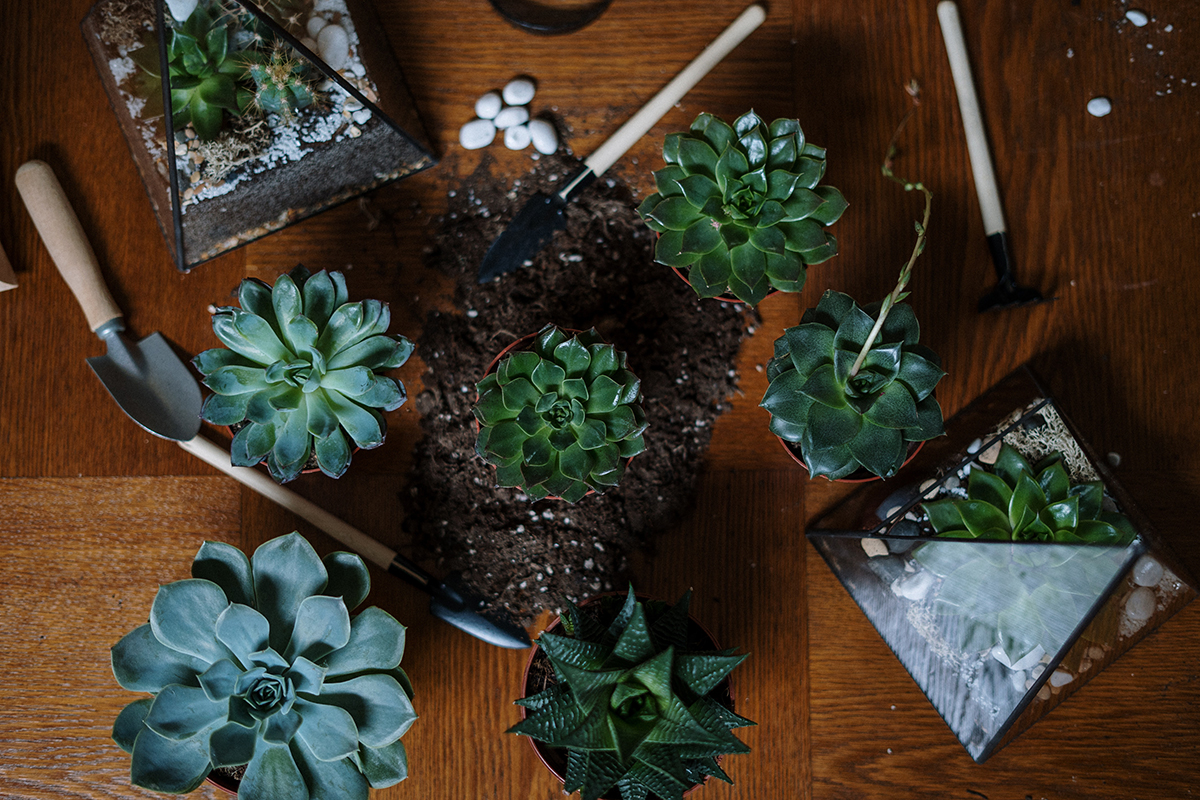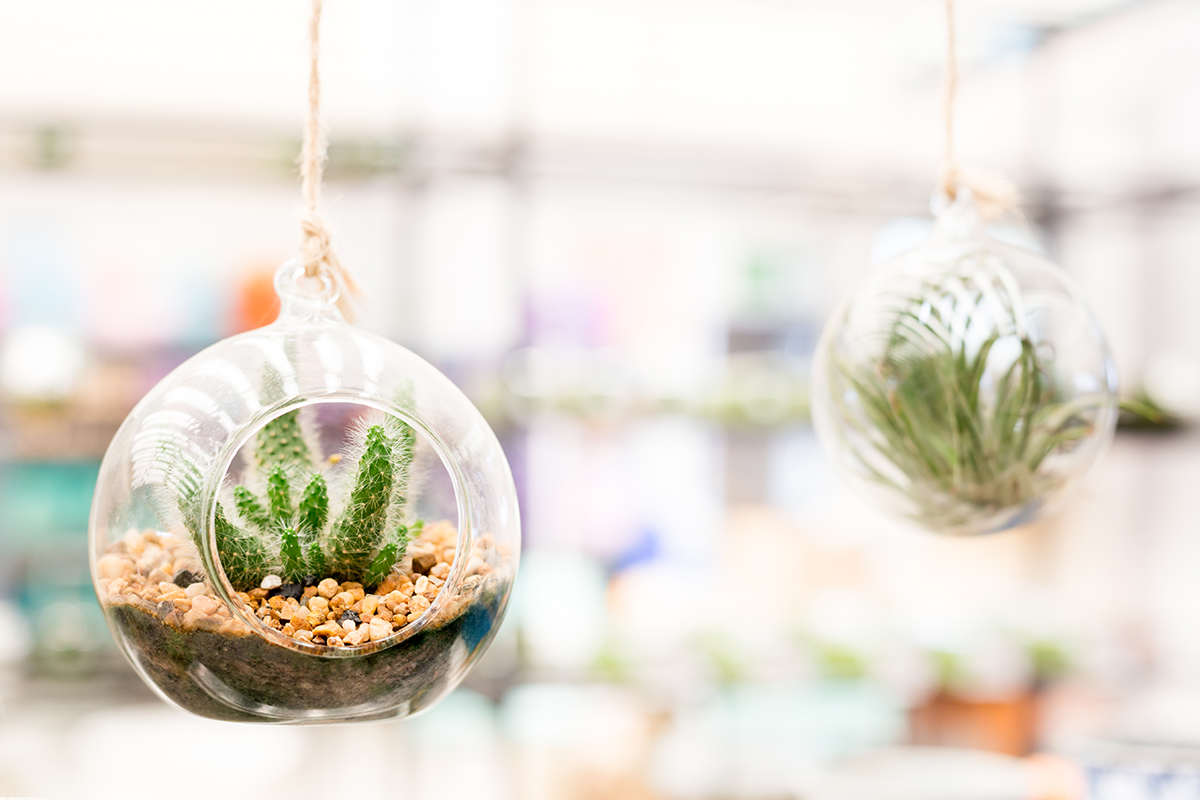Terrariums are a fun and rewarding DIY project that allows you to create a miniature ecosystem in a jar. They are a great way to bring a bit of nature into your home and provide a unique and visually appealing decoration. In this guide, we will walk you through the steps to create a terrarium in a jar, from choosing the right enclosure to selecting the appropriate plants and decor. We will also discuss the specific care needs of different plant species and how to maintain your terrarium over time. By following these steps, you can create a thriving and beautiful terrarium that will bring joy and relaxation to your home. So, let’s get started!
1. Choose the right jar
Choose the right jar: The first step in creating a terrarium in a jar is choosing the right enclosure. There are many different types of jars that you can use, including mason jars, pickle jars, and fish tanks. When selecting your jar, consider the size and number of plants you will be keeping, as well as the space you have available in your home. It’s important to choose a jar that is large enough for your plants to grow and thrive in, with plenty of room for decorations and accessories. You should also consider the overall aesthetic of the jar and whether it fits in with your home decor.
It’s also important to choose a jar with a lid or opening that allows for proper ventilation. This is especially important if you are using a closed jar, as it will help prevent the buildup of harmful gases and maintain a healthy environment for your plants. You can also consider using a jar with a removable lid or an open-top jar if you prefer a more natural look.
2. Select the appropriate plants
Select the appropriate plants: The next step in creating a terrarium in a jar is choosing the right plants. When selecting your plants, consider the size and growth habits of each species, as well as the overall aesthetic of your jar. It’s important to choose plants that are compatible with the size and lighting conditions of your jar, as well as with each other. You should also consider the specific care needs of each plant and whether you are able to provide the necessary conditions.
There are many different types of plants that you can use in a terrarium, including ferns, succulents, and air plants. You can also consider using a mix of plants to create a diverse and visually appealing ecosystem. When selecting your plants, be sure to research their specific care needs and choose species that are appropriate for the size and conditions of your jar. You should also consider the lighting conditions in your home and choose plants that are compatible with those conditions.
3. Add decorations and accessories
Add decorations and accessories: Decorations and accessories are an important aspect of a terrarium in a jar, as they add visual interest and provide your plants with a naturalistic environment to grow in. You can add decorations such as rocks, stones, and shells to create a visually appealing and stimulating environment for your plants. You can also consider using small figurines or other accessories to personalize your terrarium and add a touch of whimsy.
When selecting decorations and accessories, consider the size and number of plants you are keeping and make sure they are safe and non-toxic. You should also consider the overall aesthetic of your jar and choose decorations that complement the plants and jar. You can mix and match different types of decorations to create a unique and eye-catching terrarium. Just be sure to avoid overcrowding your jar, as this can hinder the growth of your plants and make it difficult to properly care for them.
4. Create the perfect soil mixture
Create the perfect soil mixture: The soil mixture in a terrarium in a jar plays an important role in the health and growth of your plants. It should be well-draining and rich in nutrients, as well as appropriate for the specific plant species you are growing. You can create your own soil mixture using a combination of potting soil, perlite, and peat moss. You can also consider using a commercial soil mix specifically designed for terrariums.
When creating your soil mixture, be sure to follow the specific care instructions for your plant species and avoid using soil that is too heavy or compact. It’s also a good idea to sterilize your soil before adding it to your jar to prevent the spread of disease. To sterilize your soil, you can bake it in the oven at a low temperature for a few hours or microwave it for a few minutes. This will help ensure that your soil is free of pests and diseases and ready for your plants to thrive in.
5. Water and maintain your terrarium
Water and maintain your terrarium: Watering and maintaining your terrarium in a jar is an important aspect of keeping your plants and moss healthy and thriving. It’s important to water your plants regularly, but be sure not to over-water or allow them to sit in standing water, as this can lead to rot and death. You can water your plants using a watering can or a small spray bottle, being careful to avoid getting water on the leaves or decorations. You should also monitor the moisture levels in your jar using a moisture meter or your own observation to ensure that your plants are getting the right amount of water.
In addition to watering your plants, you should also maintain your terrarium by removing any dead or dying plants and debris, and adding fresh soil or substrate if needed. You should also monitor the overall health of your plants and address any issues that arise, such as pests or disease. Regular maintenance will help ensure that your terrarium is a thriving and healthy ecosystem for your plants to grow in.
6. Troubleshooting common issues
Troubleshooting common issues: While terrariums in a jar are generally easy to care for, there are a few common issues that you may encounter. One common issue is over-watering, which can lead to rot and death of your plants.
Other issues that may arise include pests, disease, and insufficient lighting. To prevent these issues, make sure to use a sterile soil mixture, choose healthy and disease-free plants, and provide your plants with the appropriate lighting conditions. If you encounter any issues with your terrarium in a jar, be sure to seek advice from a gardening or plant care expert.
7. Creative ideas for your terrarium
Creative ideas for your terrarium: Terrariums in a jar are a fun and creative DIY project that allows you to express your personal style and bring a bit of nature into your home. There are many different ways you can customize and personalize your terrarium to suit your tastes and preferences. Here are a few creative ideas to get you started:
- Create a themed terrarium: Choose plants and decorations that fit a specific theme, such as a beach or tropical theme. You can also consider using small figurines or other accessories to further enhance the theme.
- Use colored sand or gravel: Add a pop of color to your terrarium by using colored sand or gravel as a substrate. You can mix and match different colors to create a unique and visually appealing look.
- Add a water feature: Consider adding a small water feature, such as a fountain or pond, to your terrarium to create a more naturalistic environment for your plants. Just be sure to choose plants that are appropriate for moist conditions and monitor the water levels to prevent over-watering.
- Create a living wall: Instead of using a jar, consider using a large frame or box to create a vertical terrarium, also known as a living wall. This is a great way to add a unique and eye-catching feature to your home.
With these creative ideas, you can create a terrarium in a jar that is truly one-of-a-kind and reflects your personal style.




